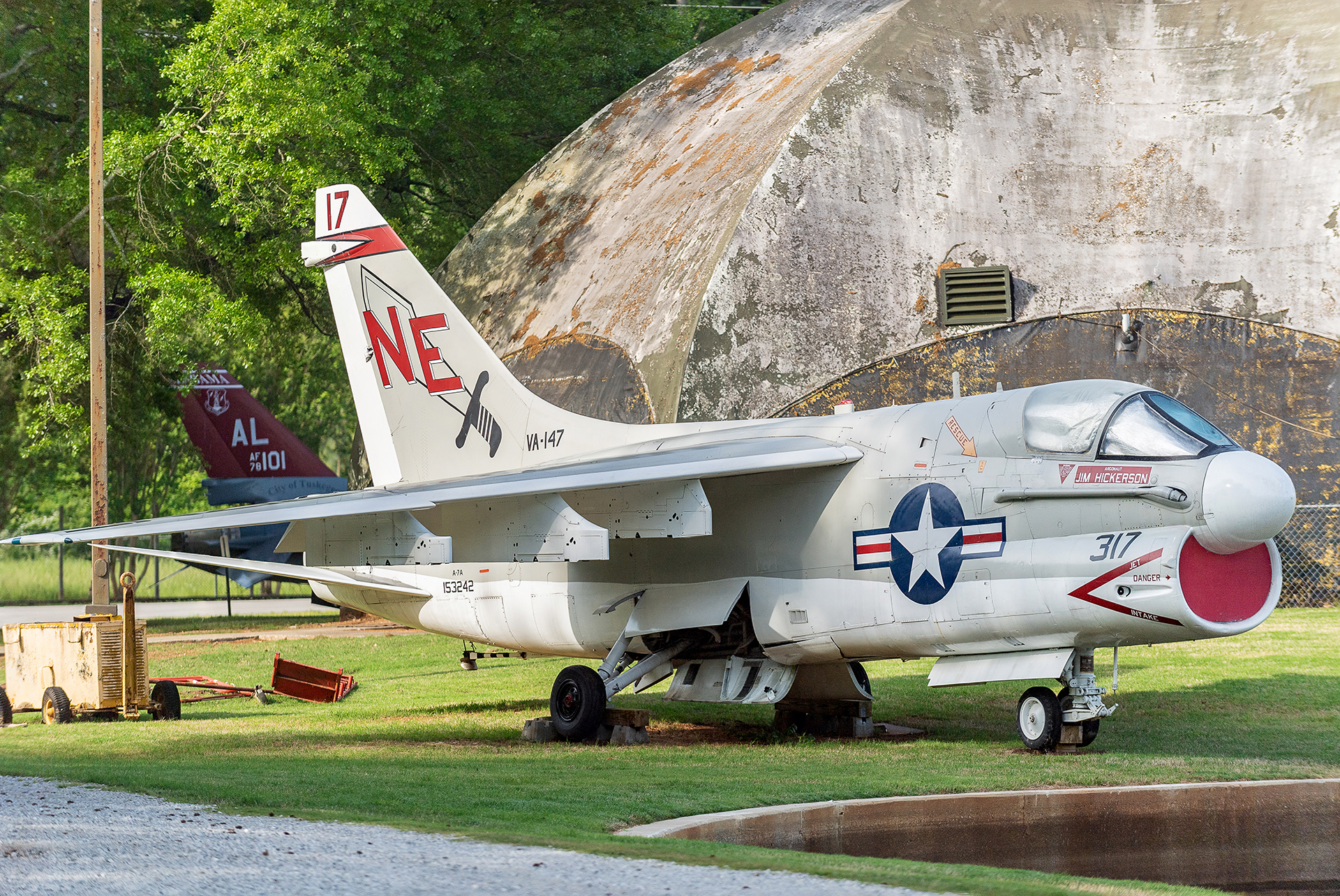
The A-7 was an aircraft with a demonstrated capability of performing well in a wide variety of missions. It was not fast, sophisticated or high-flying. Instead, the A-7 was designed to perform a variety of attack roles. The Corsair II proved its capabilities in Vietnam when it entered the conflict in 1967. The U. S. Naval and Air Force pilots who flew the Corsair II affectionately called it the SLUF – Slow Little Ugly Feller. They were proud to fly this single-seat aircraft that could fly low-altitude missions, long loiter time on a target, all while carrying more munitions than a WWII B-17 Flying Fortress. These capabilities were important for two vital missions. The first was to support Army soldiers and Marines on the ground who sometimes needed airborne support against an enemy that was just over the next hill. Search and Recovery (SAR), the second mission, was a priority to all those who have flown in combat. When a crewmember ejected over enemy territory, a SAR team of rescue helicopters and A-7Ds were immediately dispatched to the crewmember’s location. During an A-7 pilots’ SAR mission, the pilots risked their lives to suppress the enemy so a helicopter could make the pickup and return to friendly territory.
The USN A-7s were replaced by F/A-18s while the USAF used A-10s and F-16s to fill the role of the versatile A-7s. History: Our Naval A-7A came to us in December 1991 from the Navy Technical Training School at Naval Air Station, Memphis, where it was a training aid for USN and USMC technicians. It was initially assigned to the Navy’s VF-147 Argonauts, the first A-7 squadron to see combat in North Vietnam from 1967 to 1969. This aircraft is on loan from the National Naval Aviation Museum.

